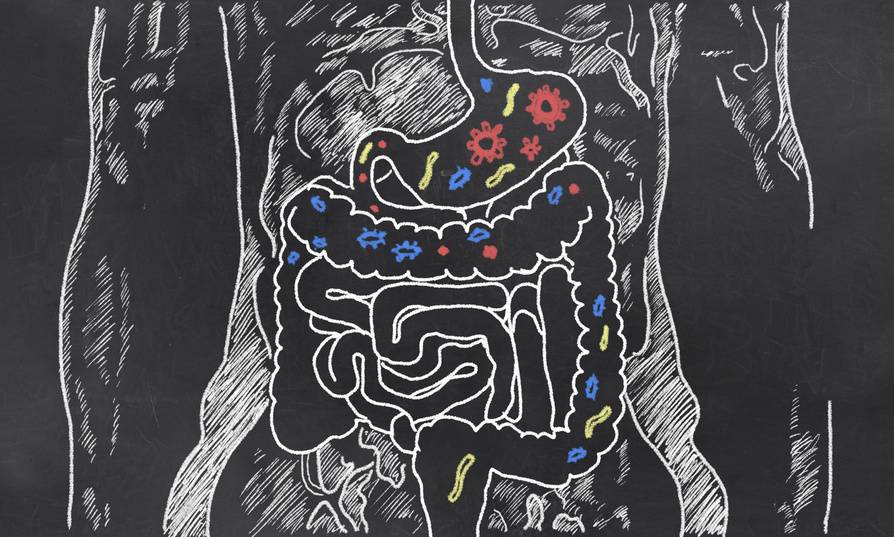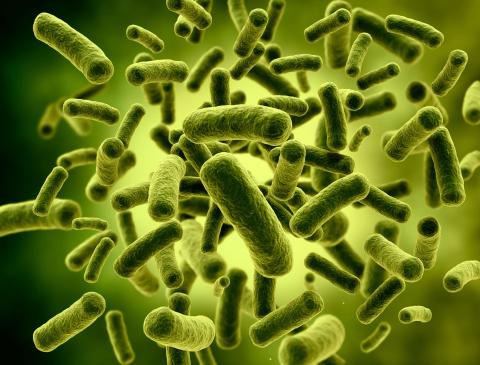The relationship between gut bacteria and diseases could be overestimated
Many diseases related to bacteria, such as inflammatory bowel disease or colorectal cancer, are associated with an overgrowth of gut bacteria considered 'bad'. However, a study published in the journal Cell suggests that changes in microbial load, rather than the disease itself, could be the driving factor behind the presence of these harmful species associated with pathologies.

Baltasar Mayo - microbiota overrated
Baltasar Mayo Pérez
Research Professor at the Institute of Dairy Products of Asturias (IPLA-CSIC)
Various changes (dysbiosis) in the normal microbiota have been linked to a wide range of diseases, such as diarrhea, constipation, Crohn's disease, ulcerative colitis, Alzheimer's, autism, cancer, and more. However, despite intense research in this field over the past few decades, "normal microbiota" and "dysbiosis" remain vague and imprecise terms, influenced by the significant interindividual microbial diversity found in healthy individuals. Furthermore, it is not entirely clear whether dysbiosis is the cause or the consequence of these diseases.
The authors have developed a machine learning program to predict fecal microbial load (the absolute abundance of microorganisms in feces) from relative abundance data, which is provided by metataxonomic (microbial amplicon sequencing) and metagenomic (total microbial DNA sequencing) analyses. Using these algorithms, they analyzed a large number of previous studies, relating the composition of the gut microbiota to total microbial load. Similarly, various diseases are linked to a lower (diseases associated with diarrhea) or higher (conditions associated with constipation) total microbial load than expected. The model does not establish causal relationships between total microbial load and diseases, but the authors believe that this total microbial load could be a significant confounding factor when associating diseases with gut microbes. Accounting for this total microbial load could allow researchers to focus specifically on a few key species for each disease. In other words, it does not have immediate practical utility but could be highly important for future studies addressing these microbe-disease associations.
Limitations:
- Although the model seems robust for estimating total microbial load from relative abundance data, the authors believe it can be refined in future studies.
- The relationship between total microbial load and certain microbial species is not very clear. That is, it is unknown whether changes in total microbial load drive changes in species composition or vice versa. This is crucial since some species (e.g., Clostridioides difficile, Escherichia coli producing colibactin, etc.) are clearly linked to diseases.
- The model has only been applied to prokaryotic populations (bacteria and archaea) in the gut. The study did not address microbial load in other biotypes, such as viruses or eukaryotic organisms (fungi, yeasts, parasites), which could also be relevant.
Toni Gabaldón - microbiota overrated
Toni Gabaldón
ICREA research professor and head of the Comparative Genomics group at the Institute for Research in Biomedicine (IRB Barcelona) and the Barcelona Supercomputing Center (BSC-CNS).
Numerous studies have already demonstrated that 'microbial load', meaning the number of microbes per gram of fecal material, can vary greatly between individuals and under different clinical conditions. This suggests a limitation in many microbiome studies, which only measure relative (not absolute) abundances of species.
The novelty presented by this study is the development of a predictive algorithm that estimates microbial load from patterns of relative abundance. This algorithm has been trained using hundreds of data points from two studies that measured both relative abundance and microbial load. While the algorithm’s estimations are not perfect, its correlation coefficients are significant, but somewhat modest, especially when the algorithm is trained on one study but applied to the other (0.56 where the maximum possible is 1).
This degree of uncertainty in prediction should be considered when drawing conclusions from the study. Noteworthy are the differences in the distribution of microbial load between the two studies, which the authors attribute to methodological differences in its determination. This indicates that the baseline data may not be representative of other studies.
In summary, it is interesting to note that relative abundance and microbial load are not entirely independent (it is possible to infer one from the other), but there is still room to improve this relationship and understand how each of these variables relates to lifestyle factors or clinically relevant characteristics. Therefore, despite this predictor, more studies that directly examine both variables are needed.
José Manuel Fernández - microbiota overrated
José Manuel Fernández-Real
Head of the Nutrition, Eumetabolism and Health Group at IDIBGI and CIBEROBN, Professor of Medicine at the University of Girona and Head of the Endocrinology Section at the Dr. Josep Trueta Hospital
The press release does not fully reflect the study with precision. It is essentially a summary of a summary, which, in itself, does not contain all the information. For instance, in one of the cohorts, it is stated:
"...capturing sufficient data for 26 diseases (i.e., >50 cases and controls for each disease) with 11,807 cases and 17,118 controls. The analysis revealed that most diseases (14/26) were significantly associated with predicted microbial load (FDR < 0.05). Nine of the significantly associated diseases showed negative associations with predicted microbial load, while five showed positive associations with predicted microbial load."
This indicates substantial heterogeneity in the association between microbial load and diseases.
The study is of good quality. The number of samples analyzed is very high, and the methodology is solid.
What is not emphasized enough is that only 7-17% of diseases are misclassified if microbial load is not considered. It is an important but not critical factor.
The study highlights a known fact, although it is not always taken into account. An indirect way to control for microbial load is to restrict the analysis to a count threshold of the different species to be analyzed and to consider compositional data.
Microbiota studies should consider this confounding factor when attributing or not attributing its associative significance to a particular phenotype or disease.
- Research article
- Peer reviewed



